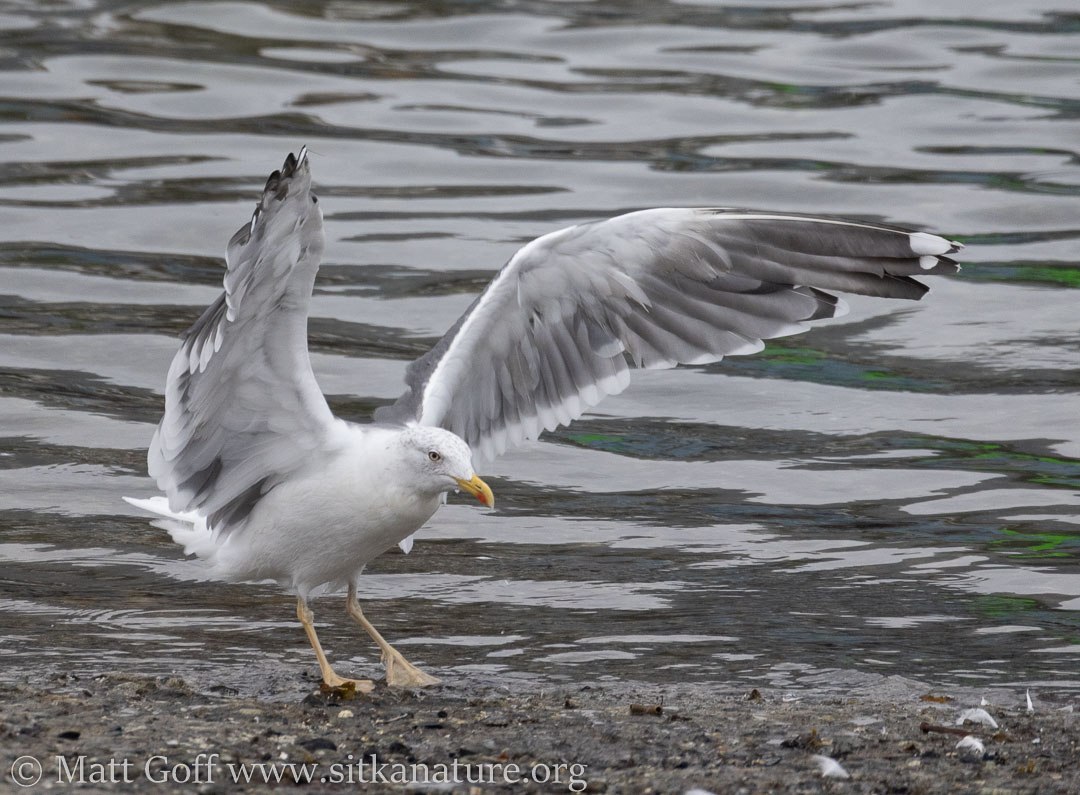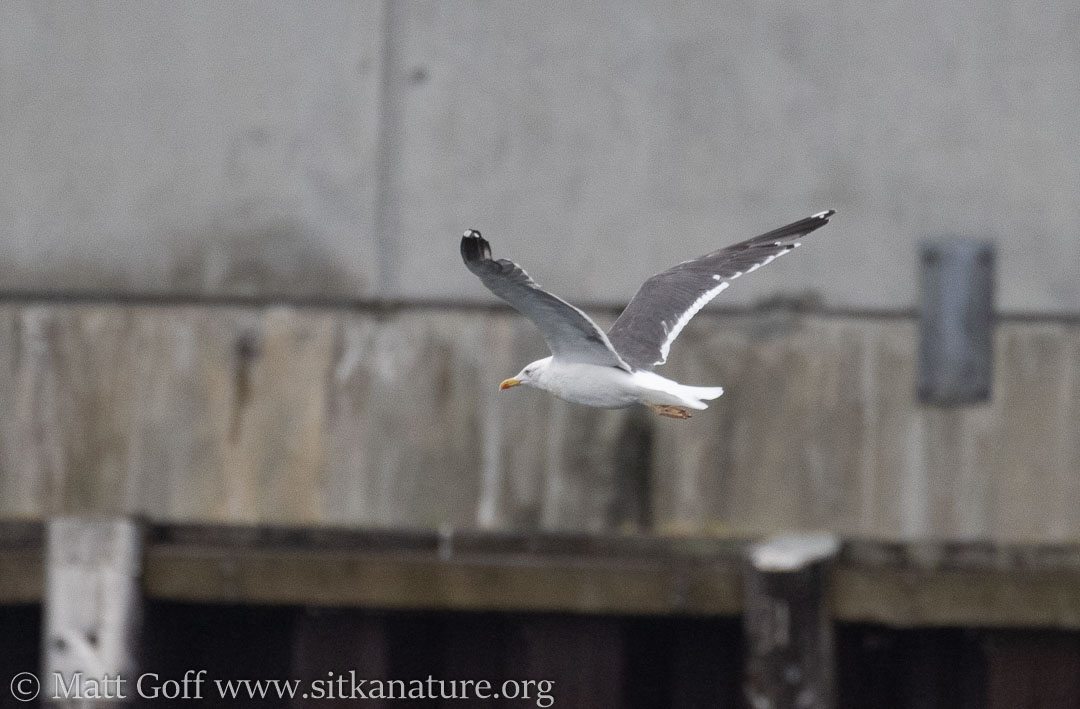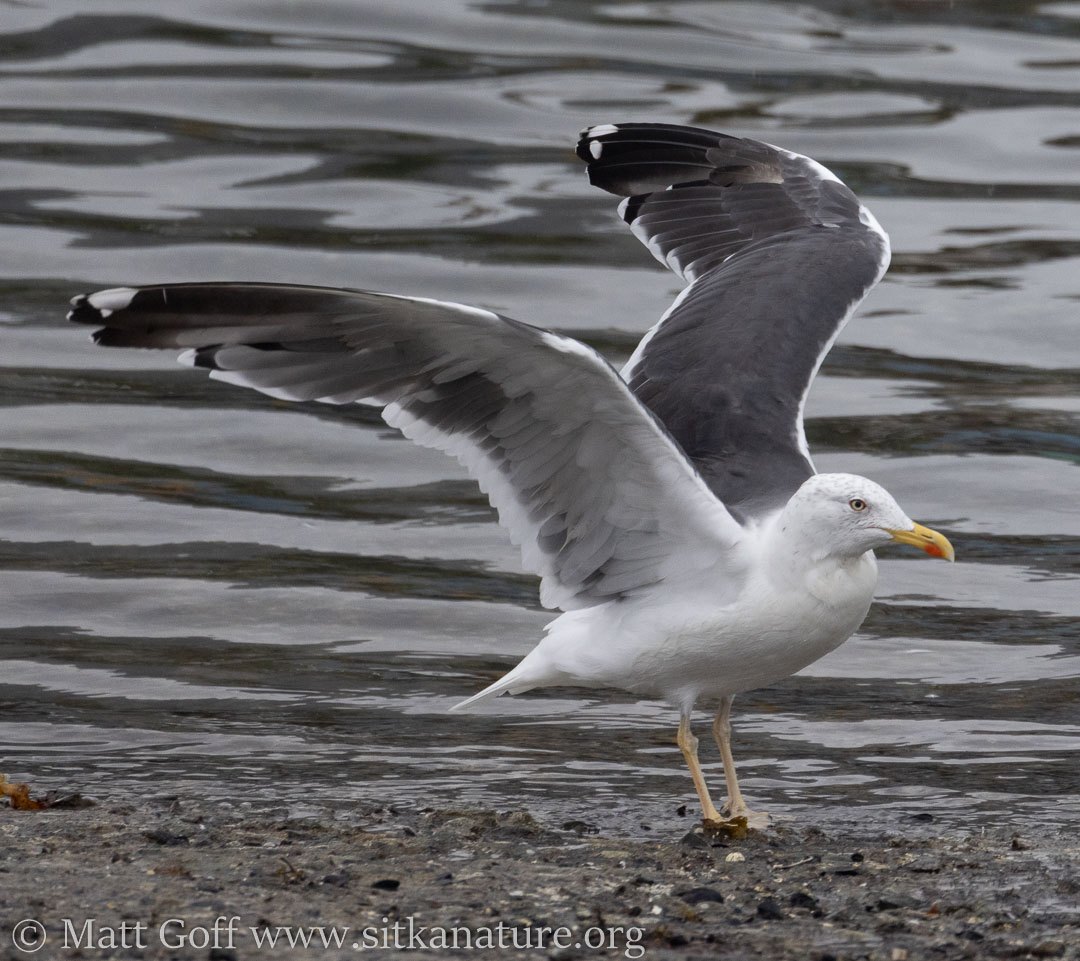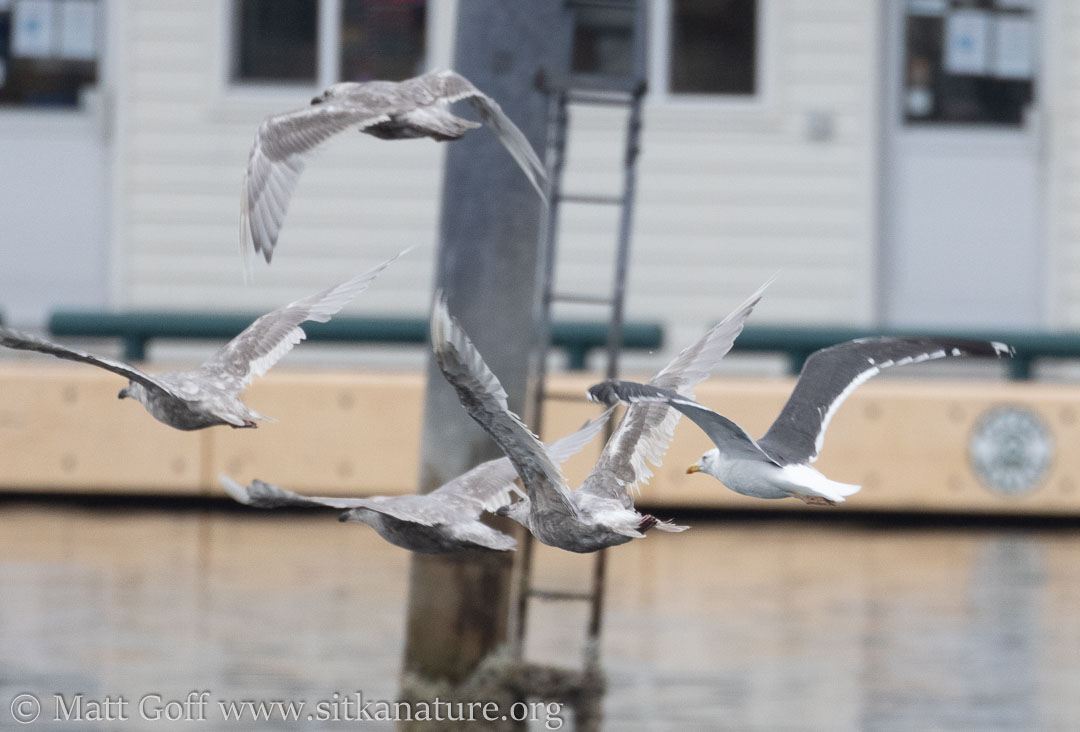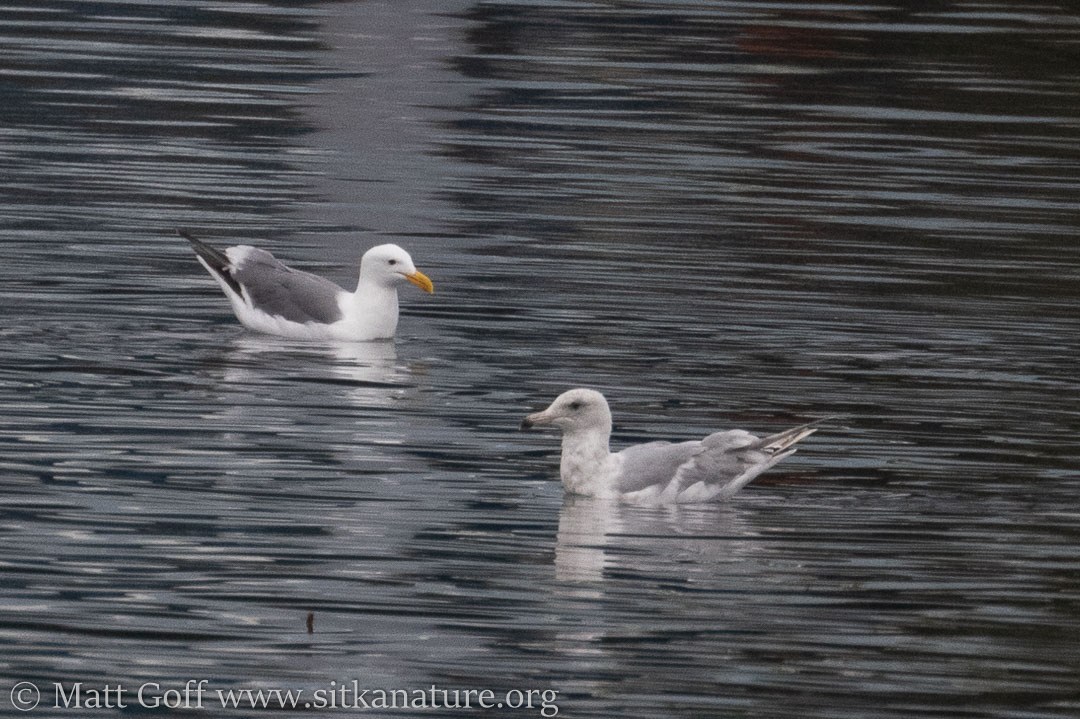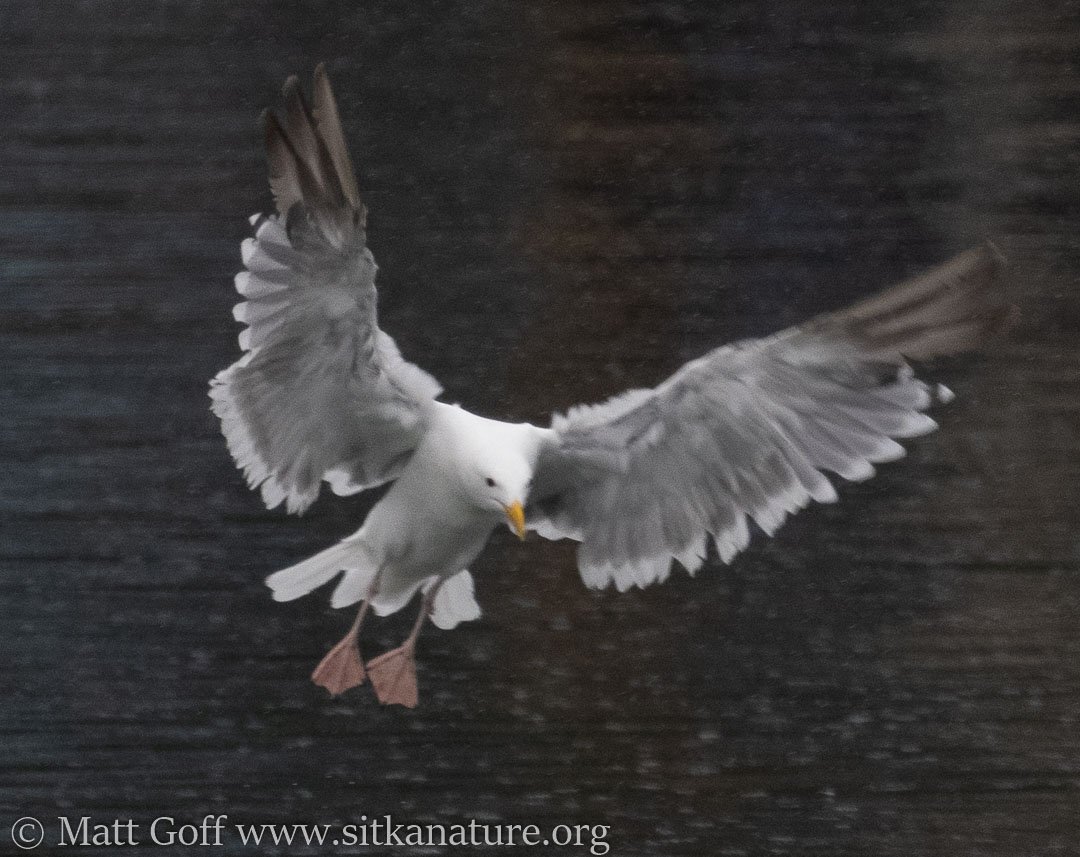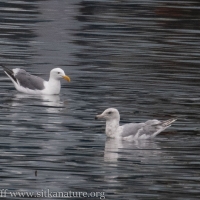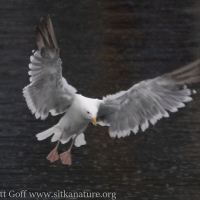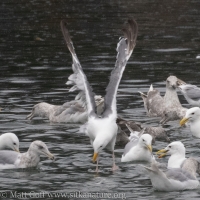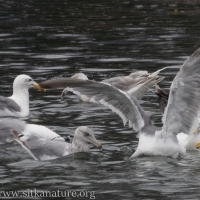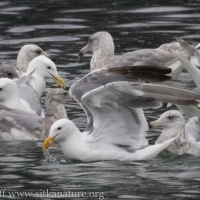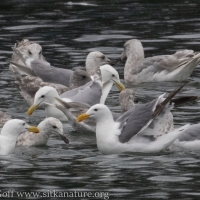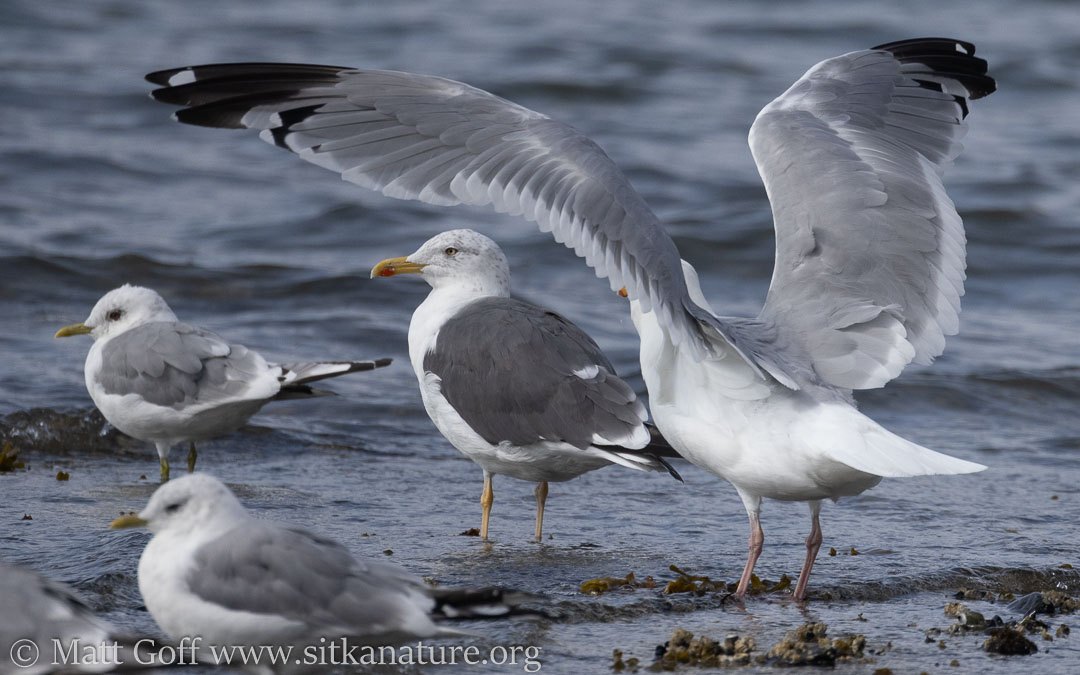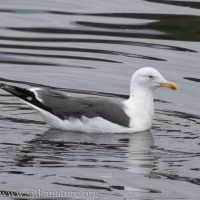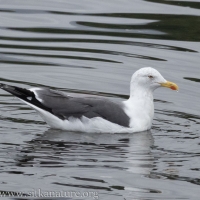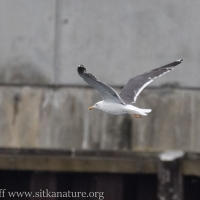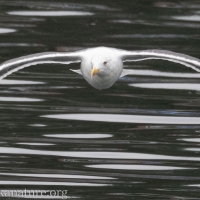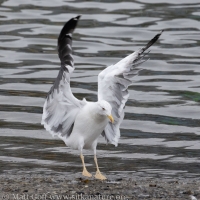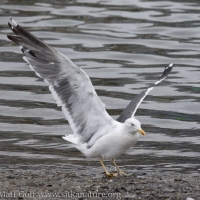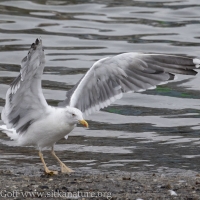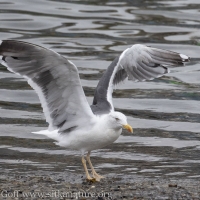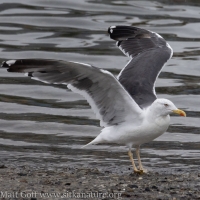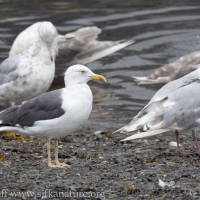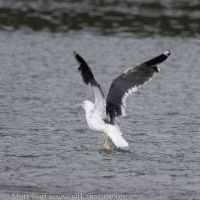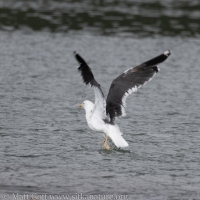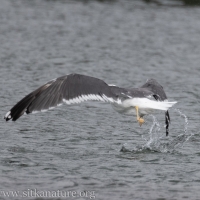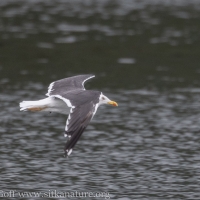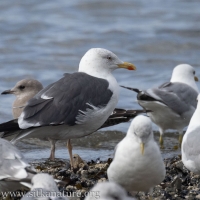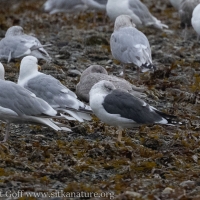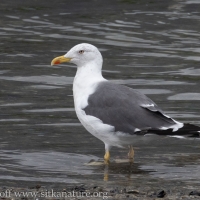I am someone who is interested in knowing and keeping track of what shows up in Sitka. Gulls can be abundant around town during some times of year. Thousands often loaf along the tide flats, work the salmon streams, or pick scraps from the fishing industry.
The vast majority of gulls we see here are one of three species and one hybrid. We also see smaller numbers of a handful of other species.
I do not really have the patience to consistently sit and study the gulls that are around, but I am interested in seeing unusual birds. One strategy I’ve practiced is looking for individuals that stand out from the flock in some way. What it means to ‘stand out’ is relative, and depends on how much effort I’m inclined to give it on a given day.
A dark mantle is a difference I always look for. None of our regularly occurring species have very dark mantles. So any dark-mantled gull is going to be relatively rare, and I’ve found them relatively easy to pick out from the crowd.
While birding with David Sonneborn who was visiting earlier this month, I noticed gulls in the channel, so we stopped to take a look.
As usual for this time of year, most of the gulls were Short-billed Gulls and Glaucous-winged Gulls. It also appeared there were some Iceland (Thayer’s) Gulls and Cook Inlet (Glaucous-winged X Herring) Gulls starting to show up.
Most of the gulls were out in the channel, but a few were along the shore in front of us. We happened to notice one coming in that had a distinctly darker mantle.
Over the years the dark-mantled gulls I’ve seen have almost all been Slaty-backed Gull or Western Gull, and this one did not seem bulky enough for a Western Gull. Without giving it a lot of study in the moment, we decided this one was a Slaty-backed Gull. I took some photos before it flushed with the other gulls as an eagle flew over.
Taking pictures as it flew, I was able to track it as it flew a big loop and came back to shore. This time it landed on the shore and I noticed it had yellow legs. When I mentioned this to David, he told me it would be a Lesser Black-backed Gull in that case. This is a species that I’ve never seen before, and not something I was looking for (nor would I have known what it was – just that it was not something I had seen before).
Lesser Black-backed Gulls have been seen in Southeast Alaska previously. One returned to Juneau annually where it nested (I think with Herring Gulls) for the better part of two decades. More recently, one was observed in Hoonah last fall. As far as I know, these are the only previous records from the region.
I texted some local folks about it, but unfortunately it flushed again with the other gulls before anyone else had arrived. This time it flew off to the northwest end of the channel.
After checking the upper end of the channel, David and I came back to the central part to watch in case the gull returned.
David noticed a darker mantled gull closer to the far side of the channel. It did not seem quite as dark as the Lesser Black-backed Gull. David pointed out that it had a relatively heavy and bright yellow bill, so wondered if it might be an Olympic or possibly Western Gull.
It came as close to us as the middle of the channel, and I was able to get distant photos of it in flight and landing, but nothing especially detailed. The next day, what I believe is the same bird was observed by KJ more closely.
I am not an expert with gulls by any means, but I do try to puzzle them out a bit (and then ask for help).
With the photos (including the ones in KJ’s iNaturalist observation), it seems clear this is either a Western Gull or a Western X Glaucous-winged (Olympic) Gull hybrid. The significantly darker mantle, heavy yellow bill, and pink legs all lead me in that direction.
The bird is not quite in full adult plumage. There is a little bit of black on its tail (seen most easily in the linked iNaturalist observation). Also, the outer three primaries are still uniformly dark.
While the bird is distinctly darker mantled than the other gulls, I’m not sure if it’s dark enough for Western Gull to be a reasonable call as opposed to the hybrid. I would be happy to hear from others their thoughts.
Olympic/Western Gull Photos
There was eventually additional good news on the Lesser Black-backed Gull. Five days later DK spotted the it out at Starrigavan. This time it was much more cooperative, spending about 2 hours on the incoming tide, mostly resting and preening.
Update: Found again on 25 August out on the flats at Totem Park in with many hundreds of other gulls.

